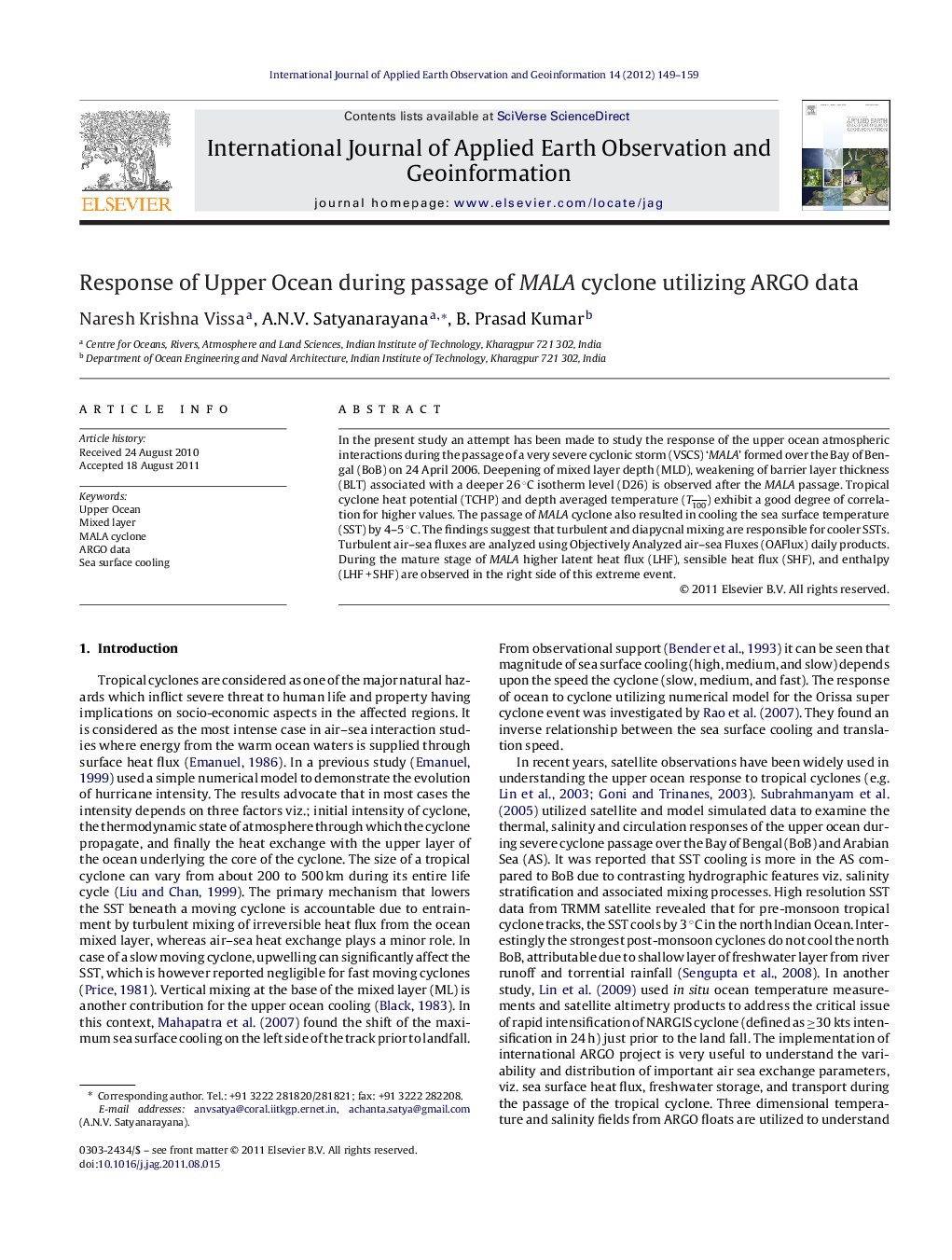| Article ID | Journal | Published Year | Pages | File Type |
|---|---|---|---|---|
| 4465043 | International Journal of Applied Earth Observation and Geoinformation | 2012 | 11 Pages |
In the present study an attempt has been made to study the response of the upper ocean atmospheric interactions during the passage of a very severe cyclonic storm (VSCS) ‘MALA’ formed over the Bay of Bengal (BoB) on 24 April 2006. Deepening of mixed layer depth (MLD), weakening of barrier layer thickness (BLT) associated with a deeper 26 °C isotherm level (D26) is observed after the MALA passage. Tropical cyclone heat potential (TCHP) and depth averaged temperature (T100¯) exhibit a good degree of correlation for higher values. The passage of MALA cyclone also resulted in cooling the sea surface temperature (SST) by 4–5 °C. The findings suggest that turbulent and diapycnal mixing are responsible for cooler SSTs. Turbulent air–sea fluxes are analyzed using Objectively Analyzed air–sea Fluxes (OAFlux) daily products. During the mature stage of MALA higher latent heat flux (LHF), sensible heat flux (SHF), and enthalpy (LHF + SHF) are observed in the right side of this extreme event.
► Maximum precipitation accumulated in the left side of the MALA cyclone. ► Turbulent, diapycnal mixing play role in sea-surface cooling and deepening of MLD. ► High enthalpy occur on the right side of the track of MALA cyclone.
